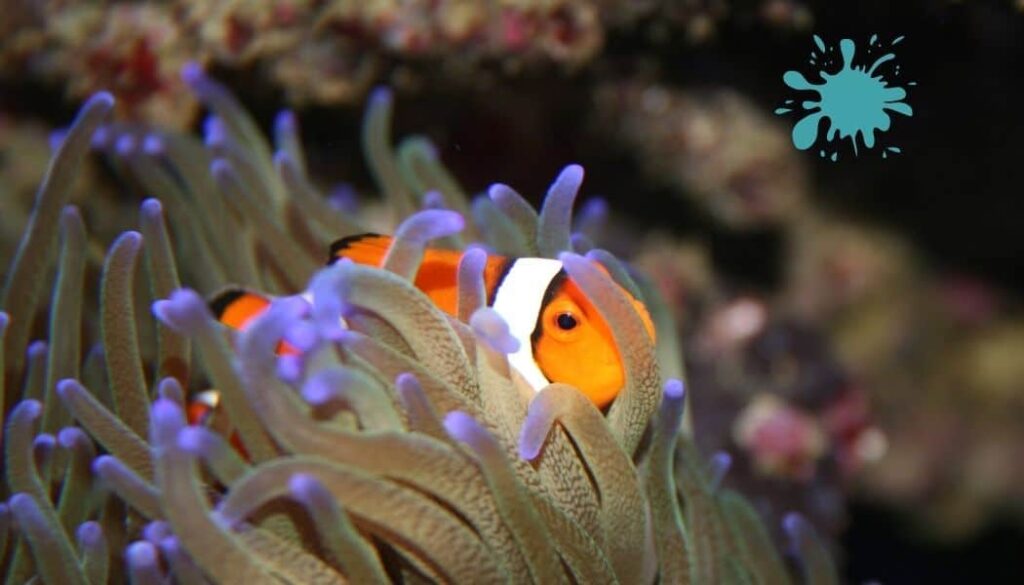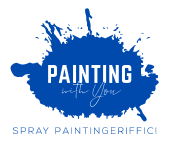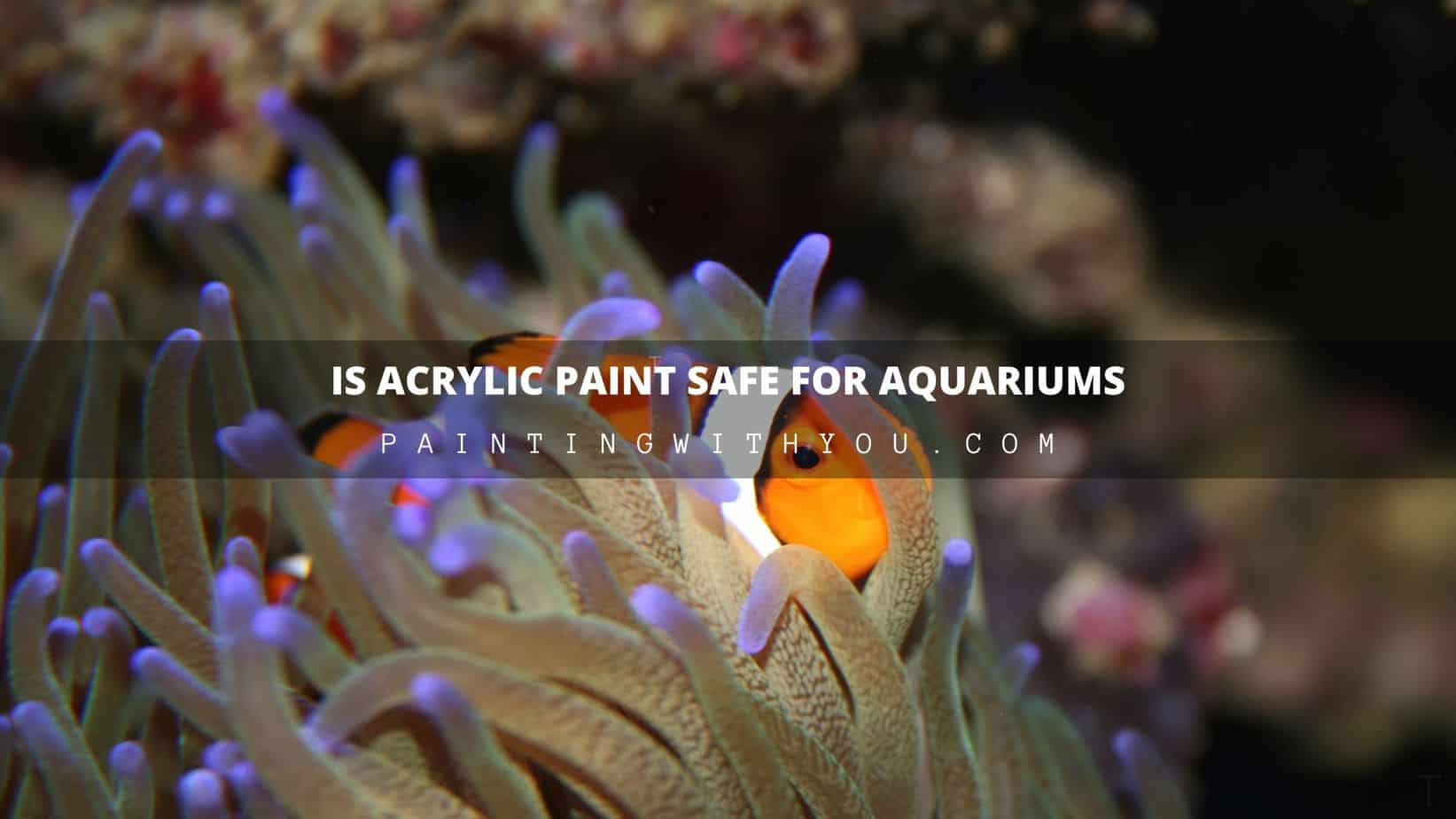When painting things to put in your aquarium, of course, you want it to look good, but you also want it to be safe. Acrylic paint is great for durability and a lot of the time, for all-purpose application, but does that include being able to be submerged underwater and around fish?
When doing my own tank, there will multiple pieces I wanted to repaint and add to create my perfect vision. My initial thought was to use acrylic paint just because it’s what I use on anything I can due to its performance, but I wasn’t sure if it was appropriate to use for my fish.
I found out some interesting facts. Read on.

Is Acrylic Paint safe to Use in Aquariums?
When it comes to acrylic paint, it’s not so much about whether or not it’s safe to use, but rather how durable it will be when submerged in water. Since acrylic paints are water-based, they will gradually start flaking off whatever they are painted on.
It’s both frustrating to deal with and at the same time worried that these harmful chemicals can potentially kill your fish.
When you use acrylic paint in aquariums, even though it appears to be non-toxic, the pieces that flake off as the acrylic breaks apart can be poisonous to your fish. It is no different for your fish to view tiny pieces of acrylic as flakey fish food, which can be extremely harmful to them. It’s not just that they’re not safe to use in your aquarium, but there are much more ideal and safe options available.
Which is Best Paint Type for Aquariums?
When you want to paint aquarium decorations, Krylon Fusion all-in-one spray paint is the best paint to use. Be mindful of the fact that you can only use Krylon Fusion, as the brand has many different types of spray paint that wouldn’t be “Aquarium safe”. This brand specifically is very popular for keeping the same consistency for years, so you don’t have to worry about flaking or peeling.
TIP: You will need to apply four coats of Krylon Fusion paint, but you should apply them very thinly. If your layers are too thick, or if you do the layers too close to each other without letting them properly dry, you take the risk that it might crack or peel.
It’s said that you don’t have to prepare your items before applying the spray paint, but sanding and priming gives you the extra comfort that the paint will provide better adhesion to the object. There have been instances where an object was not sanded and primed prior to applying Krylon Fusion, and the end result wasn’t as expected in terms of seeing zero flaking.
How to paint Aquarium glass?
While Krylon Fusion is ideal for painting plastics, it isn’t ideal for glass.
If you’re wanting to paint the glass inside the aquarium, you’d want to use Plasti Dip. This is a type of spray “paint” that dries as a rubbery material and it totally safe for the fish.
You also don’t have to worry about the fish in your aquarium eating the algae off the tank and potentially eating some of the Plasti Dip, as it doesn’t crack, peel, or chip.
Plasti Dip is sometimes used to paint over decorations for extra protection, but the most common use is to paint the backgrounds of fish tanks (from the inside).
Which Sealants Should I Use in Aquariums?
A lot of people may include Drylok within the category of paints you can use for inside an aquarium, but essentially, it acts as a sealant. Drylok is used for 3D aquarium backgrounds, but it’s main quality is to seal and prevent water loss.
NOTE: This does come out as white color rather than clear, which is partially the reason why it isn’t necessarily always considered a sealant. It’s important to note that if you get Drylok in any other color, it isn’t safe for aquarium use.
Believe it or not, Krylon Fusion has a clear coat that is widely used as a “sealant.” It is such a good option because it is known to be a Aquarium safe choice. This isn’t to be confused with Krylon’s “Crystal Clear” acrylic coating though, which is a completely different option that is deemed unsafe. Just as you’d use the regular colors on plastic, you want this give this enough time to dry in between coats and you don’t want to let it seal while in the water, otherwise it just won’t seal.
Why is important to Cure your paint?
There is a difference between drying and curing. When you let these spray paints and sealers cure, you’re letting it sit for an extended period of time (typically a week or so minimum,) to harden all the way through. Rather than just drying on the surface, you need your paint to dry completely so it ensures that your project is both done and safe for your aquarium.
When using Krylon Fusion, you need to allow it to cure and then rinse it off in dechlorinated water so you get the excess residue off. Most (if not all) items being submerged into an aquarium cannot be deemed safe and/or non-toxic until they are cured.
Another main importance of curing has to do with the fact that an uncured paint job will result in an unsatisfied result, whether immediately or in the future.
How to paint Aquarium decorations?
It’s important to know exactly how to paint Aquarium decorations, otherwise you’re risking toxicity or the possibility that your job won’t be thoroughly finished.
- Clean and prepare your objects. This may involve anything from cleaning them off, wiping them down with alcohol, to sanding and priming them for better adhesion.
- Apply very thin layers (anywhere from 2-7 depending on the object and making sure they dry between each following coat,) to ensure maximum adhesion and less possibility for lifting/peeling/flaking.
- Allow time for your paint to cure.
- Apply your sealant to the object and give that time to cure.
- Wash off necessary objects with dechlorinated water.
- Place them in the tank and enjoy.
Keep in mind
I’m going finish off with a reminder of those boxes you need to check off when choosing the proper type of paint for your aquarium. Always make sure its non-toxic, waterproof, and it is deemed safe paint for animals. You also want to make sure that you don’t use a paint that is described to be “mold-resistant,” as these are just inherently unsafe for aquariums.
Painting for your aquarium can be fun and rewarding for both you and your fish. Above all, make sure that it’s done with following all safety precautions, so it’s something you get to enjoy for a long time!

